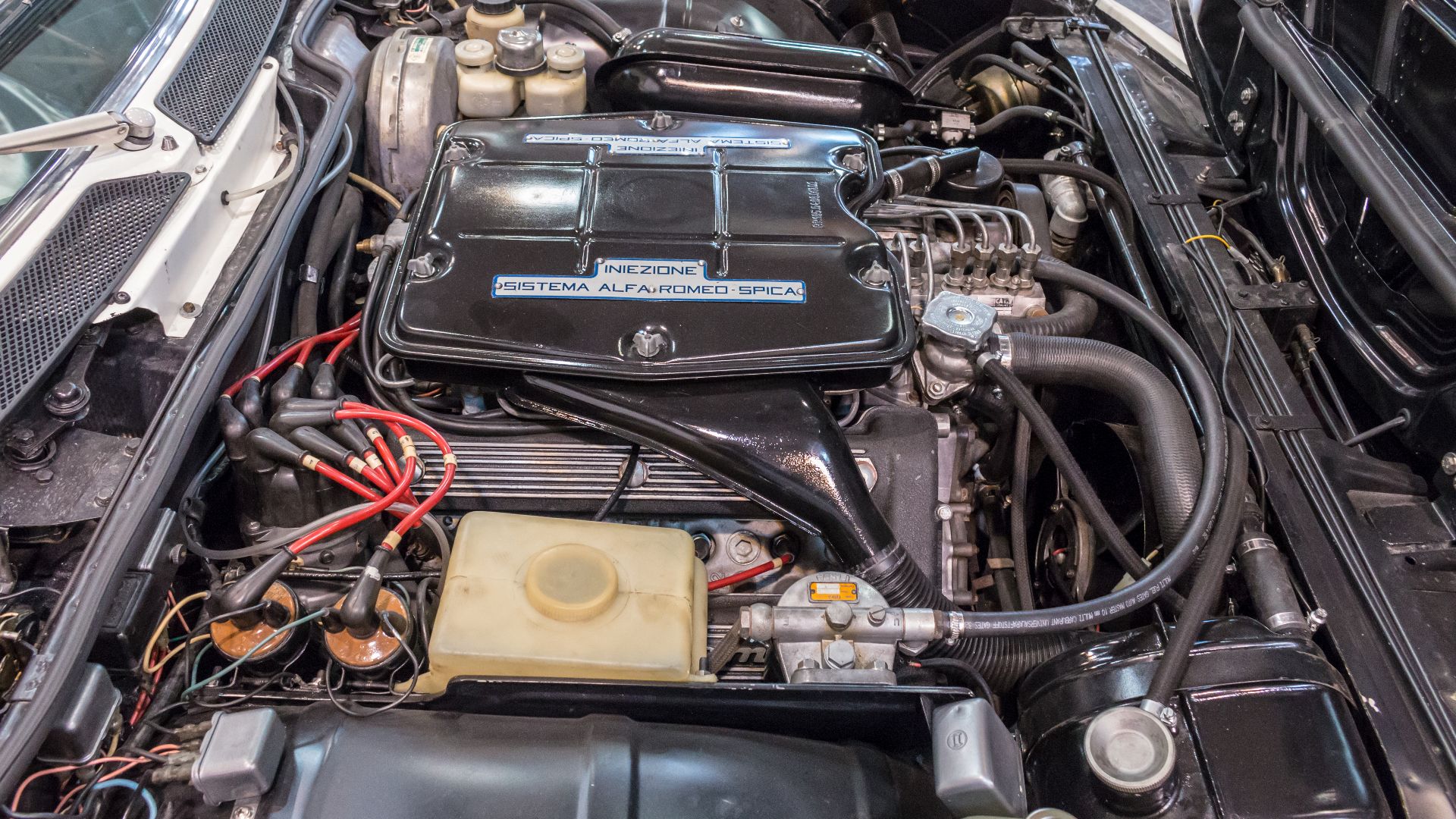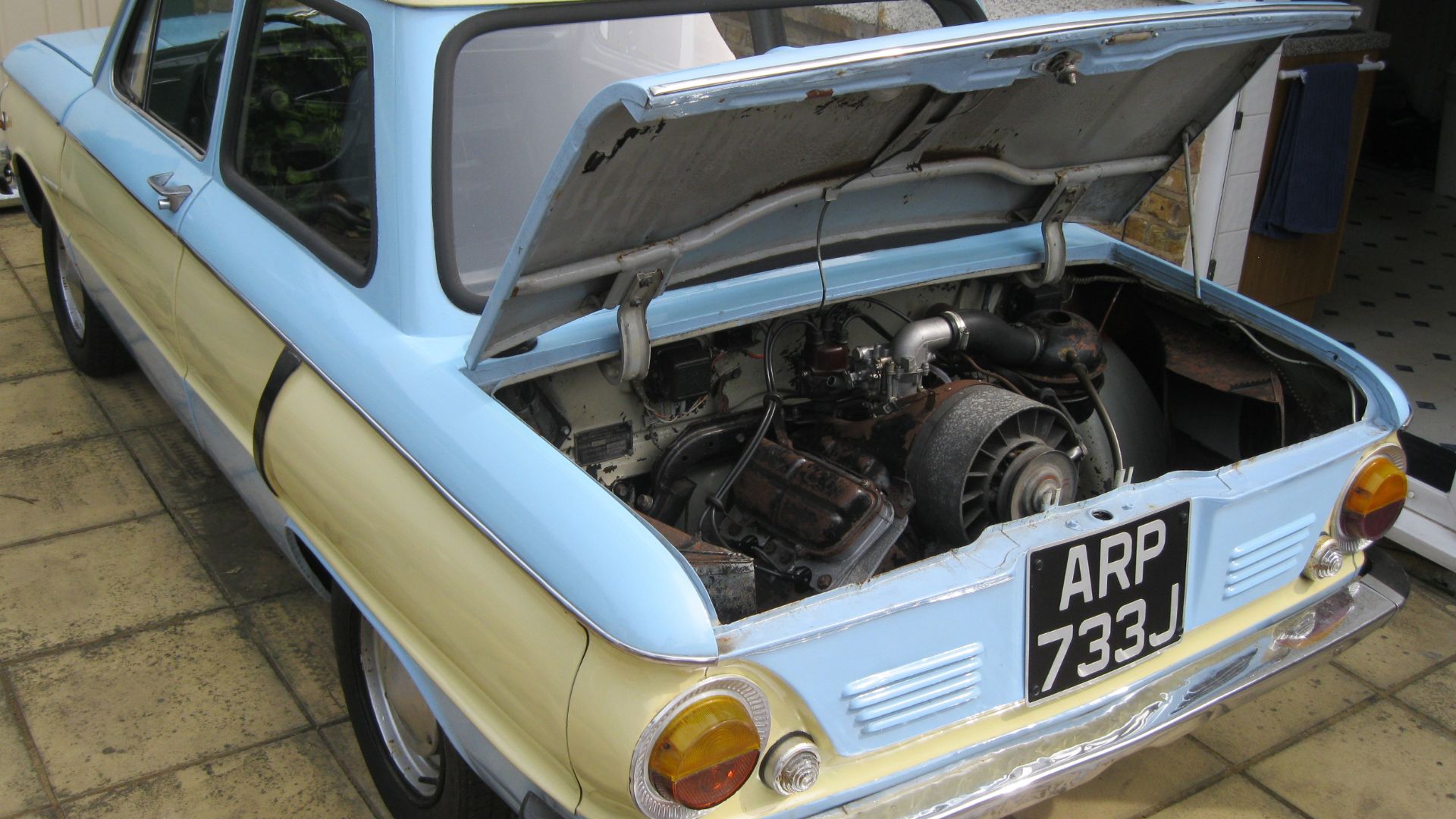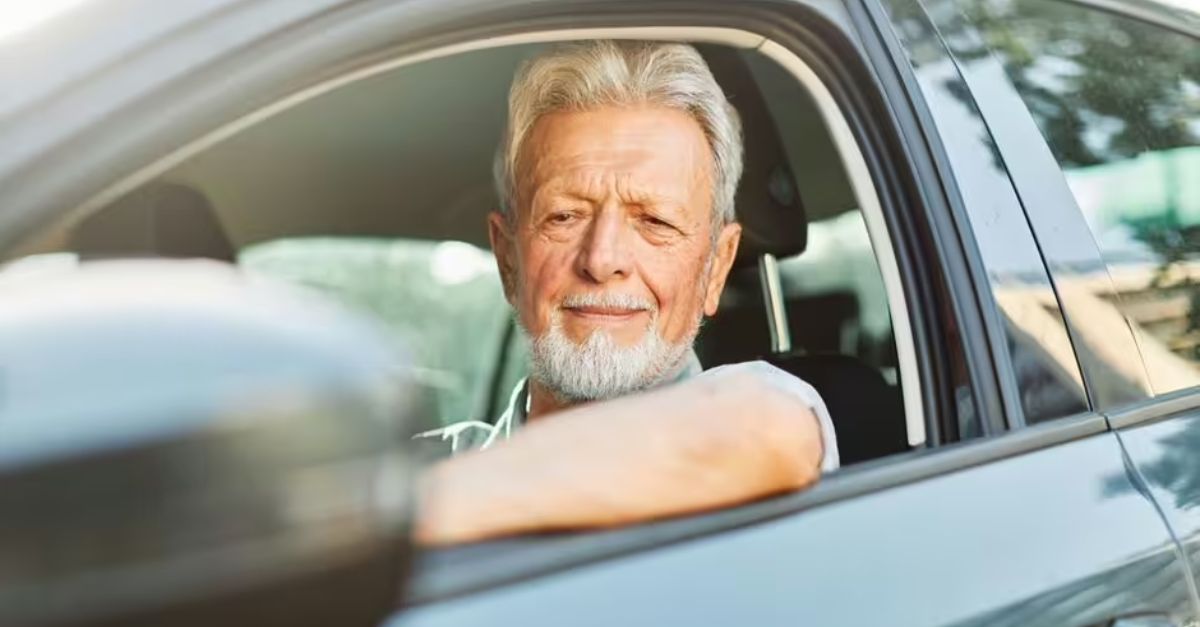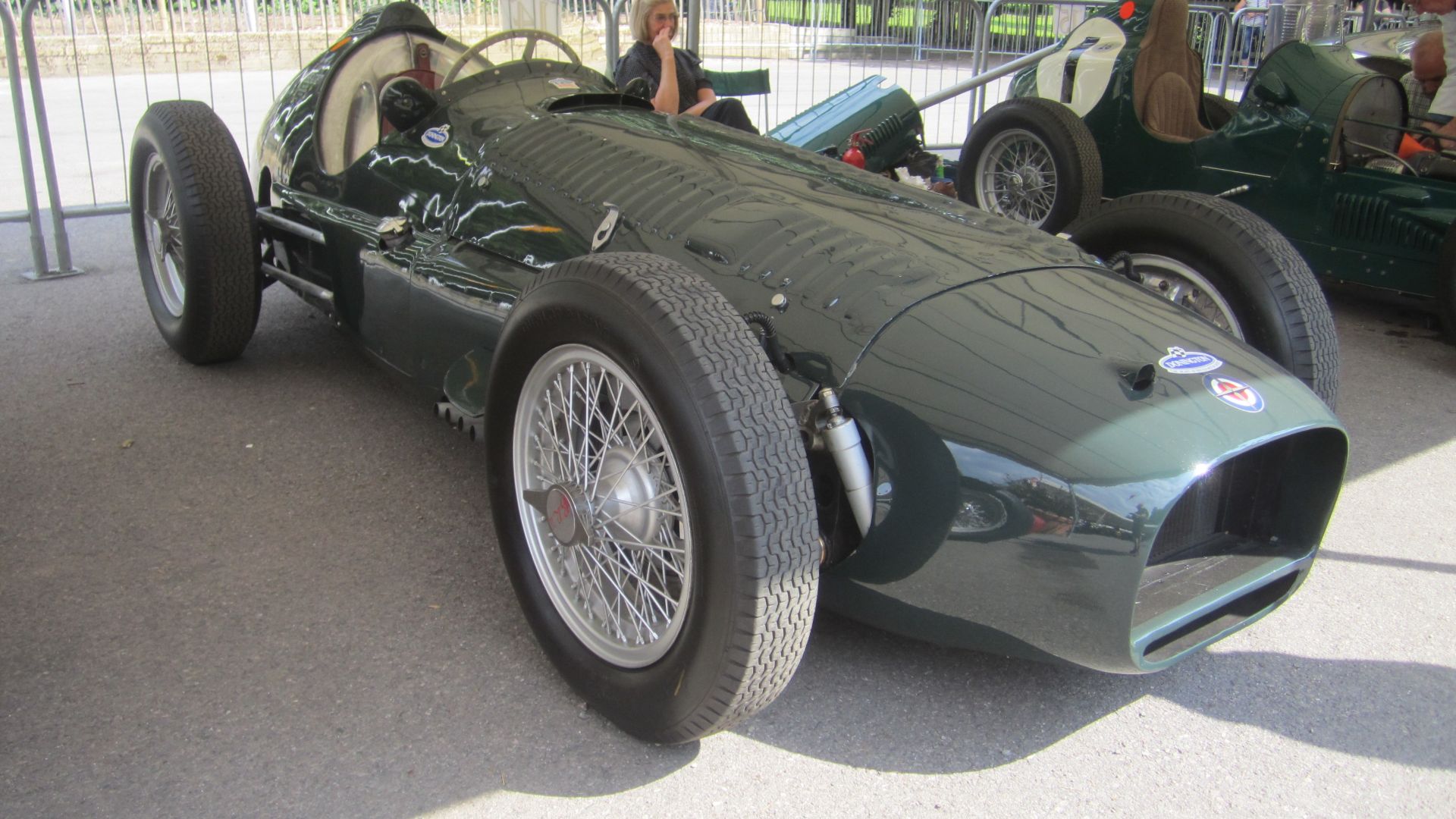Powerplants With No Equal
There's a world of engines most people never hear about. Too bold or too ahead of their time, some of these odd mechanical creations live briefly, sometimes only once, under the hood of very specific machines.

Mazda Rotary (13B & 20B Legacy)
Mazda embraced the rotary engine fully. The 13B was the first to power every RX-7 and stood out for compact packaging and high-revving traits. Later, the 20B triple-rotor was built solely for the Japan-exclusive Eunos Cosmo, which extended a rare engineering line few manufacturers dared pursue.
 Wikisympathisant, CC BY-SA 4.0, Wikimedia Commons
Wikisympathisant, CC BY-SA 4.0, Wikimedia Commons
NSU Ro80 Wankel Engine
The NSU Ro80 was ahead of its time and paid the price. Introduced in 1967, it featured a twin-rotor Wankel engine that promised smoothness and innovation. But rotor seal failures plagued early models, ruining their reputation. Audi later acquired NSU, and the Ro80 quietly faded into history.
 Andrew Bone, CC BY 2.0, Wikimedia Commons
Andrew Bone, CC BY 2.0, Wikimedia Commons
Chrysler A-831 Turbine
Buzz surrounded the A-831 turbine engine, which burned fuels as varied as diesel and tequila. Chrysler loaned 50 units to families in 1963 to gather feedback. Production never advanced due to cold-start issues and concerns about costs. Today, only nine of these experimental cars remain intact.
 Chrysler Corporation engineering staff, Wikimedia Commons
Chrysler Corporation engineering staff, Wikimedia Commons
Volkswagen VR6
Debuting in the 1991 Passat and Corrado, the VR6 offered smooth power within a remarkably tight engine package. Volkswagen engineered its narrow-angle layout to fit six cylinders and a single head into a compact bay. This clever packaging stayed unique to VW and never migrated elsewhere.
 BrokenSphere, CC BY-SA 3.0, Wikimedia Commons
BrokenSphere, CC BY-SA 3.0, Wikimedia Commons
Volkswagen VR5
The VR5 was an even rarer sibling to the VR6. Featuring five cylinders arranged in a staggered, narrow-angle layout, it first appeared in the 1997 Passat. With a single head and odd firing intervals, it never left the VW Group and was phased out by 2006.
 TuRbO_J from Adelaide, Australia, Wikimedia Commons
TuRbO_J from Adelaide, Australia, Wikimedia Commons
Lancia V4
Lancia's narrow-angle V4 engine debuted in the 1922 Lambda and evolved over the course of four decades. With both banks close enough to share a head, it saved weight and space. Used in cars like the Fulvia Coupe, the layout was unique to Lancia and disappeared with the brand's loss of engineering autonomy.
 Craig Howell, CC BY 2.0, Wikimedia Commons
Craig Howell, CC BY 2.0, Wikimedia Commons
Tatra 603 Air-Cooled V8
Built in Czechoslovakia, the Tatra 603 featured a rear-mounted, air-cooled V8 engine unlike anything found in Western markets. Designed for officials and diplomats, it ran from 1956 to 1975. Its swing-axle suspension and unique cooling layout offered quirks and performance few outside Eastern Europe ever experienced.
 User Asterion, CC BY-SA 2.5, Wikimedia Commons
User Asterion, CC BY-SA 2.5, Wikimedia Commons
Cadillac V16 (Series 452)
In 1930, Cadillac launched the Series 452 with a 7.4-liter V16—an engineering marvel for its time. Targeted at the ultra-luxury market, it offered exceptional smoothness and prestige. However, the Great Depression crushed demand. Fewer than 4,000 were built before Cadillac discontinued the project in 1940.
 Nick.Pr, CC BY-SA 4.0, Wikimedia Commons
Nick.Pr, CC BY-SA 4.0, Wikimedia Commons
Cadillac Blackwing V8
Hand-assembled in Bowling Green, the Blackwing 4.2-liter twin-turbo V8 marked Cadillac's boldest modern engine effort. It delivered 550 horsepower with dual overhead cams and was available in just two variants of the CT6. Production stopped soon after 2019, as GM pivoted away from low-volume performance sedans toward electric platforms.
 New Cadillac Blackwing V8 – CT6 V by Sapaugh Chevrolet Buick GMC
New Cadillac Blackwing V8 – CT6 V by Sapaugh Chevrolet Buick GMC
BMW M88 Inline-Six
BMW's M88 engine debuted in 1978 beneath the M1 supercar's rear deck, featuring a 24-valve twin-cam head and mechanical fuel injection. It produced over 270 horsepower. Later used in the M635CSi and M5, the M88 left a lasting mark on BMW's high-performance engineering legacy.
 Buschtrommler, CC BY-SA 3.0, Wikimedia Commons
Buschtrommler, CC BY-SA 3.0, Wikimedia Commons
Ferrari Tipo F140 65° V12
Ferrari developed the Tipo F140 65° V12 for the 2002 Enzo, which drew on Formula One technology. Its naturally aspirated 6.0-liter layout produced 651 horsepower and shrieked past 8,000 rpm. This engine evolved into derivatives for later models but never left Ferrari's lineup.
 Yanko Malinov, CC BY-SA 4.0, Wikimedia Commons
Yanko Malinov, CC BY-SA 4.0, Wikimedia Commons
TVR Speed Six
TVR sought independence from Rover V8s by developing a 4.0-liter inline-six at its Blackpool facility. The engine offered up to 400 horsepower and an unmistakable growl. However, early mechanical issues soon emerged by weakening its reputation and complicating TVR's push to establish its own powertrain identity.
 Tvrcerbera, CC BY-SA 4.0, Wikimedia Commons
Tvrcerbera, CC BY-SA 4.0, Wikimedia Commons
Toyota 1G-GEU Twin-Cam I6
Before turbocharging became common, Toyota introduced the 1G-GEU in 1982—a twin-cam, 24-valve inline-six built for smoothness and refinement. It powered models like the Supra Mk2 and Soarer with high-revving precision. Despite its innovation, the engine remained a Japan-only offering and never reached global markets.
 Morio, CC BY-SA 3.0, Wikimedia Commons
Morio, CC BY-SA 3.0, Wikimedia Commons
Volvo B8444S V8 (Yamaha Built)
Compact and smooth, the B8444S was a 4.4-liter V8 engine built by Yamaha and mounted transversely—a rarity for an eight-cylinder engine. It powered Volvo's XC90 and S80 in the mid-2000s. Though praised for refinement, tightening emissions standards eventually ended its production run.
 Sfoskett, CC BY-SA 3.0, Wikimedia Commons
Sfoskett, CC BY-SA 3.0, Wikimedia Commons
Citroen Flat-Four
In the 1970s and early 1980s, Citroen's compact GS and GSA featured a longitudinally mounted flat-four engine with front-wheel drive. The air-cooled engine provided balance and a low center of gravity. Alongside hydropneumatic suspension, it helped shape Citroen's distinct vision for engineering small, refined vehicles.
 Acadiane with a Citroen GS flat four engine By Old Timer Garage
Acadiane with a Citroen GS flat four engine By Old Timer Garage
Mitsubishi 6A10 V6
Compact sedans like the Lancer and Mirage received Mitsubishi's 1.6-liter 6A10 in the early 1990s. It was the company's smallest production V6, engineered for smooth, high-revving. While responsive in lightweight cars, its low torque output limited broader use, especially outside specific regional markets.
 Grunkohlaktionar, CC BY 4.0, Wikimedia Commons
Grunkohlaktionar, CC BY 4.0, Wikimedia Commons
Ford SHO Yamaha V6
The Ford Taurus SHO stunned buyers in 1989 with its Yamaha-built 3.0-liter V6. Featuring dual overhead cams and 24 valves, it delivered 220 horsepower and a 7,000 rpm redline. Hand-assembled in Japan, it added unexpected precision and thrill to a mid-size American family sedan.
 Skydivingdutch, CC BY-SA 3.0, Wikimedia Commons
Skydivingdutch, CC BY-SA 3.0, Wikimedia Commons
Honda CVCC Compound Vortex
By the 1980s, CVCC technology had faded from production, but its impact remained. Debuting in the 1975 Civic, the engine used a pre-chamber to ignite lean fuel-air mixtures. It met emissions rules without a catalytic converter, which proves Honda's ingenuity in low-emission combustion design.
 Idatengu, CC BY-SA 3.0, Wikimedia Commons
Idatengu, CC BY-SA 3.0, Wikimedia Commons
Fiat TwinAir Turbo
Fiat's 0.9-liter TwinAir Turbo was a two-cylinder engine designed for efficiency without sacrificing character. It featured MultiAir variable valve timing and offered surprising torque for its size. Used in the Fiat 500 and Panda, it paired quirky sound with modern emissions compliance in a tiny package.
 Andrea Pavanello, CC BY-SA 3.0 IT, Wikimedia Commons
Andrea Pavanello, CC BY-SA 3.0 IT, Wikimedia Commons
Mazda Skyactiv-X Compression-Ignition Gasoline
Mazda's Skyactiv-X engine made its debut in the Mazda3 and CX-30. It used Spark Controlled Compression Ignition (SPCCI) to enable lean-burn combustion without sacrificing performance. The technology marked a bold step toward cleaner internal combustion. Mazda aimed to merge diesel-like efficiency with traditional gasoline responsiveness.
General Motors Two-Mode Hybrid V8 (LFA/BAS+)
GM's Two-Mode Hybrid system combined a 6.0-liter V8 with two electric motors inside a specialized transmission. Launched through a partnership with BMW and DaimlerChrysler, it powered vehicles like the Yukon Hybrid. Despite its efficiency, poor market reception and high production costs led to its early end.
 Aluminum 6.0 LS Inspection And Test Fire: LFA and 2ML70 Hybrid Escalade Drivetrain by Travis Black
Aluminum 6.0 LS Inspection And Test Fire: LFA and 2ML70 Hybrid Escalade Drivetrain by Travis Black
Subaru EF12 Three-Cylinder
During the 1980s and early 1990s, Subaru equipped the Justy and similar models with its 1.2-liter EF12 three-cylinder engine. Multi-point fuel injection and overhead camshafts gave it efficiency and simplicity. Eventually, Subaru shifted its entire lineup back to flat-four engines by retiring the EF12 design.
 How works 3 three cylinder engine by Peter Finn the car doctor
How works 3 three cylinder engine by Peter Finn the car doctor
Oldsmobile Jetfire Turbo V8
The Jetfire, introduced in 1962, was among the first turbocharged production cars. Its 215-cubic-inch aluminum V8 used a Garrett turbo and a water-methanol system called Turbo-Rocket Fluid. Turbo lag and complexity led to low sales, but it paved the way for future forced-induction tech.
 Greg Gjerdingen, CC BY 2.0, Wikimedia Commons
Greg Gjerdingen, CC BY 2.0, Wikimedia Commons
Nissan S20 DOHC I6 (Skyline GT-R C10)
Born from Prince's R380 race program, Nissan's S20 engine paired triple carburetors with dual overhead cams in a high-revving 2.0-liter inline-six. It debuted in the Hakosuka Skyline GT-R. That launch ignited a motorsport legacy that shaped Japan's high-performance engineering for decades to follow.
BRM V16 Supercharged
Built solely for the Type 15 Formula One car in the early 1950s, the BRM V16 has a supercharged 1.5-liter layout. It shrieked past 12,000 rpm. Its intricate design—featuring twin blowers and roller bearings—delivered power but proved overwhelmingly unreliable and costly to maintain.
Panhard Flat-Twin
Aluminum components and torsion-bar valve springs gave Panhard's air-cooled flat-twin engine a peculiar edge. Found in models like the Dyna and PL17, it thrived on simplicity. In post-war France, its frugal charm offered a quirky alternative to the era's more typical four-cylinder setups.
 Panhard Engine by John Passfield
Panhard Engine by John Passfield
DKW 3=6 Two-Stroke I3
By blending simplicity with surprising output, the DKW 3=6's two-stroke inline-three engine powered cars like the F91 and F93. Its name implied equivalence to a six-cylinder four-stroke, and for its size, it delivered. Lightweight and reliable, this quirky drivetrain helped define East German motoring.
 Stahlkocher, CC BY-SA 3.0, Wikimedia Commons
Stahlkocher, CC BY-SA 3.0, Wikimedia Commons
Packard V12
Packard's Twin Six debuted in 1915 as one of the world's first production V12 Engines. Quiet and expensive, it symbolized American luxury before World War I. Later iterations refined the formula through the 1930s, but its exclusivity and cost kept it limited to high-end models only.
Alfa Romeo Montreal V8
A detuned racing engine derived from Alfa's Tipo 33, the 2.6L V8 Montreal delivered 200 hp through SPICA mechanical fuel injection. Exclusivity stemmed from its intricate tuning and a rev-happy, exotic temperament hidden beneath the GT coupe's distinctive bodywork.
 Matti Blume, Wikimedia Commons
Matti Blume, Wikimedia Commons
Jaguar V12 HE
Jaguar's High-Efficiency (HE) V12 debuted in 1981, which evolved from its thirstier predecessor. By reworking the cylinder heads and combustion design, it offered improved fuel economy without losing grace. Reserved mostly for the XJS and XJ12, it proved powerful yet refined during a fuel-conscious automotive era.
 dave_7, CC BY 2.0, Wikimedia Commons
dave_7, CC BY 2.0, Wikimedia Commons
Cadillac V8-6-4
In 1981, Cadillac introduced cylinder deactivation through the V8-6-4 engine. Intended to improve fuel economy, it used a digital module to cut cylinders under light load. While the concept was ahead of its time, lagging electronics led to erratic performance and an early exit.
ZAZ V4 Air-Cooled
Ukrainian-built Zaporozhets cars featured a rear-mounted, air-cooled V4 engine, unlike anything found in Western showrooms. Developed during the Soviet era, this compact engine prioritized simplicity and ease of repair. Though modest in output, its rugged design kept it running in rural Eastern Europe long after production ended.
 Andrew Bone from Weymouth, England, Wikimedia Commons
Andrew Bone from Weymouth, England, Wikimedia Commons
Zundapp Janus Twin
The Zundapp Janus, a microcar from 1957 Germany, placed a 245cc single-cylinder two-stroke between its back-to-back seats. Known more for symmetry than speed, the layout centered on weight. Production lasted less than two years, and the engine remained exclusive to this uniquely mirrored design.
 Alf van Beem, Wikimedia Commons
Alf van Beem, Wikimedia Commons
Chevrolet Cosworth Vega Twin-Cam
In 1975, Chevrolet inserted a Cosworth-designed twin-cam four-cylinder into the Vega. With electronic fuel injection and an aluminum block, it aimed to offer performance in a domestic compact. Despite high-rev potential and engineering finesse, the engine appeared in only about 3,500 cars before production stopped.
 BUTTON74, CC BY-SA 4.0, Wikimedia Commons
BUTTON74, CC BY-SA 4.0, Wikimedia Commons
SAAB Longitudinal V4
Preserving cabin space and making maintenance easier, SAAB engineers mounted Ford's compact V4 longitudinally and angled it slightly. This layout soon defined their unconventional engineering ethos. Though sourced from Ford, the engine's distinct placement made it a signature feature of the SAAB 96 throughout the 1960s and 1970s.
 Herranderssvensson, CC BY-SA 3.0, Wikimedia Commons
Herranderssvensson, CC BY-SA 3.0, Wikimedia Commons
Subaru EN07X Supercharged Four
Fitted solely to the Subaru Vivio RX-R, the EN07X delivered impressive output from just 660cc thanks to twin cams and a supercharger. Built for Japan's kei class, it packed performance into a tiny package. Its exclusivity and tuning made it a cult favorite among enthusiasts.
 Cp9asngf, CC BY-SA 4.0, Wikimedia Commons
Cp9asngf, CC BY-SA 4.0, Wikimedia Commons
Covini V8 Diesel
Rare among performance supercars, the Covini C6W utilized a naturally aspirated 4.2L Audi V8 rather than a diesel. Covini once explored diesel prototypes, but production favored a gasoline engine for power delivery. That decision aligned better with the six-wheeled car's ambitious design and niche performance focus.
Gordon Murray T.50 V12
Cosworth built the T. 50's naturally aspirated V12 to be nothing short of an engineering masterpiece. With a 12,100 rpm redline and weighing only 178 kg, the 3.9L engine is exclusive to the T.50 hypercar and has not been featured in any other automotive history.
 T.50s VLOG | EPISODE #03 | V12 ENGINE DYNO SIMULATION - LE MANS by Gordon Murray Automotive
T.50s VLOG | EPISODE #03 | V12 ENGINE DYNO SIMULATION - LE MANS by Gordon Murray Automotive
Bugatti W16 Quad-Turbo
Bugatti's W16 quad-turbo setup first appeared in the Veyron and evolved through the Chiron. Built solely for Bugatti, this 8.0-liter powerhouse combines extreme engineering and exclusivity, which makes it one of the most unique and unshared engine layouts ever fitted in a production car.
 Heinz Reutersberg, CC BY-SA 4.0, Wikimedia Commons
Heinz Reutersberg, CC BY-SA 4.0, Wikimedia Commons
Lexus LFA V10
Lexus never reused the 1LR-GUE V10 despite its success in the LFA. Engineers used digital instruments to capture its sharp, high-pitched tone. Developed with Yamaha's input, the 4.8-liter V10 revved high and delivered an experience unlike anything else Toyota ever put into production.
 Mike Roberts, CC BY-SA 2.0, Wikimedia Commons
Mike Roberts, CC BY-SA 2.0, Wikimedia Commons
Gillet Vertigo Maserati V8
Powered by a 4.2 L Ferrari‑derived V8, the Vertigo .5 Spirit used the Maserati/F136 engine shared with Maserati road models. Gillet hand‑assembled the unit in a roughly 950 kg carbon‑fiber chassis, which created a boutique supercar that combined exotic performance with bespoke engineering.
 Tennen-Gas, CC BY-SA 3.0, Wikimedia Commons
Tennen-Gas, CC BY-SA 3.0, Wikimedia Commons
Aston Martin Valkyrie Cosworth V12
Cosworth's 6.5L V12 for the Valkyrie revs past 11,000 rpm and weighs less than many four-cylinders. Its wild, naturally aspirated performance is exclusive to the Valkyrie and AMR Pro, which makes it one of the last true halo engines of the combustion era.
 Aston Martin Valkyrie’s 1,000bhp V12 engine | Top Gear by Top Gear
Aston Martin Valkyrie’s 1,000bhp V12 engine | Top Gear by Top Gear
Toyota 7M-GTE
Toyota's 7M-GTE, with its factory intercooler and notable boost, served the Supra Mk3 Turbo and the Toyota Soarer 220 from 1987 to 1992. No other model received it. It left behind a legacy defined by fierce tunability and single-generation exclusivity, cherished by those who sought performance in compact form.
 Toyota 7M-GTE: Everything You Need to Know by Dust Runners Automotive Journal
Toyota 7M-GTE: Everything You Need to Know by Dust Runners Automotive Journal
Maserati Tipo 26B Supercharged Inline-Eight
Race-born in the late 1920s, Maserati's Tipo 26B packed a supercharged straight-eight meant for Grand Prix glory. A few rare derivatives reached the road, which makes them prized oddities. Later, 8C models carried larger engines, but none preserved the 26 B's original, lean racing aggression.
 Herranderssvensson, CC BY-SA 4.0, Wikimedia Commons
Herranderssvensson, CC BY-SA 4.0, Wikimedia Commons













